I was barely a teenager when Log Home Living, the cornerstone of a small, family-owned publishing company, was founded in 1983. What’s even more astonishing to me is that I’ve spent three-quarters of my professional life in the log and timber home industry.
Before joining the magazine in 2000 as a young associate editor, I’d job-hopped for years, writing everything from advertising copy to aerospace news. It wasn’t until I landed at Log Home Living that I felt like I’d found my home. Just like our readers, I fell in love with logs and timbers and the warmth of wood dwellings; but it was the warmth of the people behind these homes that sealed the deal for me.
To mark our 40th anniversary, we could have done what most magazines do by looking back at our changes through the years — and there have been many, not the least of which was our decision to combine Log Home Living and Timber Home Living into one super-magazine in 2019. But I thought it would be more interesting to chat with a few of the industry’s long-time leaders about what’s changed over the decades — and maybe more importantly, what hasn’t.
What’s Changed
Log and timber-framed homes are steeped in history. As such, there’s a temptation to preserve everything exactly as it has been. People don’t live in museums, however; and the smart folks who design and fabricate these houses have found innovative ways to update them without sacrificing that legacy.
But Jonathan Orpin, founder of New Energy Works, a timber-frame studio/shop with offices in New York and Oregon, isn’t too interested in history. For him, it’s all about craft. “Craft transcends history,” he notes. “When you walk into ‘craft,’ you know it when you see it … you feel it.”
“Log and timber homes have seen a lot of changes over 40 years, as both designers and manufacturers have evolved to make their homes more accommodating, energy efficient and structurally sound,” adds Michael Grant, a 30-year industry veteran, designer and principal at Modern Rustic Homes in Georgia.
There are a few key areas where these changes for the better really shine. And it starts with a more informed buyer. This is advantageous, because when prospective owners contact producers, they have a clearer picture of the design and materials that will go into their homes. It’s this level of education and expectation that leads every aspect to follow.
Design
“When I got into the business in 2003, design was not the primary focus — the log or timber frame product was,” says Jim Banner, president of PrecisionCraft Log & Timber Homes, Riverbend Timber Framing and Insulspan, a structural insulated panel manufacturer. “Historically, log and timber home design fit well with the simpler, smaller homes: rectangles, modest square footage, modest budgets.”
Michael agrees: “When I entered the industry, the majority of log homes consisted of a basic, four-corner box with shed porches and a few dog-house dormers. They were intentionally simple to build. Kits were popular for buyers who wanted the DIY route, but much has changed. The classic Appalachian cabin has become a multi-story lodge to accommodate today’s architectural preferences.”
“Through the years,” Jim adds, “the market has shied away from the ‘cabin in the woods’ philosophy toward legacy wood homes, and design has increased in importance and complexity. That has driven a necessary evolution of attributes that can accommodate larger, more complex designs, as well as a whole lot more engineering. Log and timber home companies that offer design services used to have ‘drafting and design’ departments – now it’s ‘design and engineering.’”
“We did our first hundred homes before I learned to spell the word ‘engineer,’” quips Jonathan. “But one of the largest shifts I’ve seen is on that focus toward fully engineered structures. This has translated into creative problem solving and structures that may not have happened in a more regulated environment.”
As an example, Jonathan references the early days of their business: “We didn’t have the studies related to preventing catastrophic failure that we do today, and what’s more, we didn’t have any pressure for that,” he says. “As time went on and we moved into other geographic areas like the West, which became more active in timber framing, we faced new constraints, such as seismic zones. We had to adapt. Creativity and that sense of the ‘cowboy frontier’ have catapulted our industry to the forefront.”
“That’s kind of the fun thing about this industry; we see a lot of customization,” says Mark Elliott, who grew up in this business and is vice president of Coventry Log Homes in New Hampshire. “People now will design things into their homes that seem really outside the box, because they are not concerned with resale. They make their decisions and choices based solely on what they want out of the home.”
In the same vein as the desire for more intricate and personalized designs, hybrid homes are in high demand. “We are using a lot more diverse materials than we used to, and there is a lot more color and creative lighting — especially in log homes — than ever before,” says Mark.
“Where once a log home buyer didn’t want to see a scrap of drywall or other non-log building component anywhere in the home,” explains Jim. “Today, logs and timber-framed elements not only find themselves side by side, they’re installed next to plaster, cement board, concrete and other building materials that, 40 years ago, would be considered sacrilege.”
However, Jim is quick to add: “That doesn’t mean that there aren’t a lot of ‘pure’ log homes that still get built — they do. But as our niche industry grows, it must become more mainstream. The more that happens, the more buyers’ predominant tastes stray away from the purist approach and head toward designs that emphasize wood and organic components that allow for flexibility as well as better architectural design.”
Fabrication
“Back in the day, builders often would have raw logs sent to the site, but most of the fabrication of those logs was done on site, whether it was hewing them, cutting the corners, etc., and then assembly,” shares Dan Mitchell, a log and timber home builder for more than 30 years and the owner of Eagle CDI in Tennessee. “Now, thanks to improved technology and equipment, log providers do the majority of that prep, so the packages come precut to the site, which is a lot more efficient for builders, resulting in faster construction.”
“From a manufacturing standpoint, we still use a lot of the same tools and techniques we’ve used for decades,” shares Mark, “but where we’ve made continual improvements are through engineering and pre-production, like best usage of materials and the specs we provide to builders. When a builder constructs one of our homes, every single step and piece of material is provided in detail so they can build the home efficiently and with less waste, making them more cost effective to build.”
Dan adds: “Advances in fastening system technologies also have improved greatly over the decades, which makes these homes even stronger than they inherently are.”
Energy Efficiency
Energy conservation and environmental stewardship are topics on everyone’s minds now; however it’s actually something that the log home industry has been addressing since its inception.
“Back in the 1970s and ’80s, we were conducting studies to scientifically prove what our customers were saying: that log homes are easy to heat. Maybe we weren’t calling it ‘energy efficiency,’ ‘green building’ or other terms we use today, but the concepts were the same,” says Mark. He shares a recent example:
“This winter, a huge storm hit New England and a lot of people were without power, including one of our customers who’d built a vacation log home in northern New Hampshire. They had no electricity for more than two days, so there was no heat generating during that time,” he says. “Despite this, when they walked in, it was still 60 degrees inside. They couldn’t believe how well insulated the house was.”
Jim has also seen a shift in the way clients view energy in these houses.
“Ten years ago, people would call PrecisionCraft or Riverbend because they were interested in the timbers or the logs,” he shares. “Since our business is built around the foundation of energy efficiency, the SIPs came along with the wood, and people accepted that as part of the construction method. Today, people call us for energy-efficient solutions and the timbers or logs are a great structural accompaniment,” he says. “Buyers are now more concerned about sustainability, which is resulting in building high-performance homes.”
As a builder, Dan has seen this perception shift from the frontlines. “In the 1990s, there was consumer concern about air infiltration in log homes in particular. Over the past decade, those concerns have been resolved and their air-tightness and energy performance have been proven time and again, thanks to better construction methods and more precise manufacturing and engineering, as well as fastening systems. These vast improvements have alleviated people’s fears and allowed them to move toward log homeownership with confidence.”
Affordability is another significant change fueling the sustainability movement. In the past, high-performance building materials were cost-prohibitive for the average buyer. According to Jim, that economic picture has altered significantly to enable more homebuyers to take advantage of their benefits.
“Building codes have evolved to the point that energy performance is no longer ‘nice to have”; it’s a requirement,” Jim asserts. “Fortunately, cost differences to achieve code have narrowed and are almost immaterial.”
What’s Remained the Same
Home trends come and go, but one thing that hasn’t changed is this: Log and timber-framed homes are passion purchases. They offer the chance to get back to the basics; to capture the warmth and feeling of the wood only a log or timber home can provide.
Buyers/Owners
“The typical person who wants a log or timber home is seeking the tranquil lifestyle that comes with living in a natural environment,” explains Dan. “A lot of people who bought log and timber homes 30 to 40 years ago still live in them, or, they’ve handed them down to the next generation.”
Jim admits that while there are other, more economical building methods from which buyers can choose, there are important reasons people choose log or timber homes over the competition.
“Log and timber-framed homes are not built for shelter,” Jim asserts. “These homes are driven by dreams, ideals or aspirations that are much more than ‘I need a house.’ This is one thing in this industry that hasn’t changed through the years and will never change.”
The Companies Behind the Homes
“On the manufacturer side, something that’s thankfully remained the same is a commitment to customer service,” Dan enthuses. “The vast majority of log and timber frame producers still meet with clients face to face, personally work with them on design and give them the opportunity to touch and experience the product firsthand, rather than relying on internet sales. This level of involvement between the client, manufacturer and builder has not been lost over the years. Buyers find value in that.
“But, for me, the biggest thing is that the majority of the log and timber frame companies that were around 40 years ago are still here,” continues Dan. “Through downturns, recessions, pandemics, inflation and other issues that have negatively affected housing and caused many conventional-home builders to go out of business, log and timber producers have not only stayed the course, they’ve stood the test of time.”
“All in all, the modern log and timber home industry has enhanced the hard work of our forefathers,” concludes Michael. “Today’s homes are more efficient, livable and comfortable. Innovation and creativity continue.”





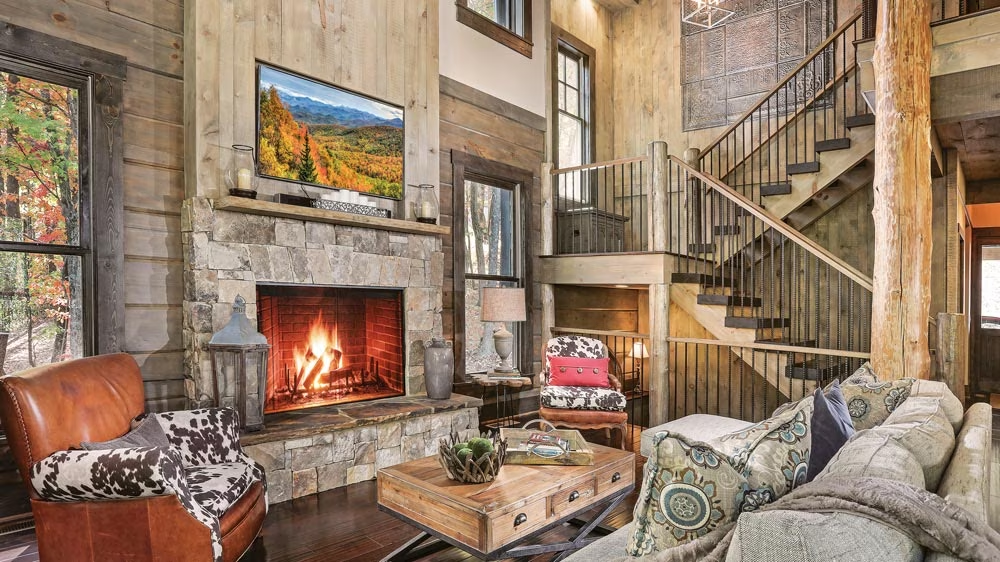
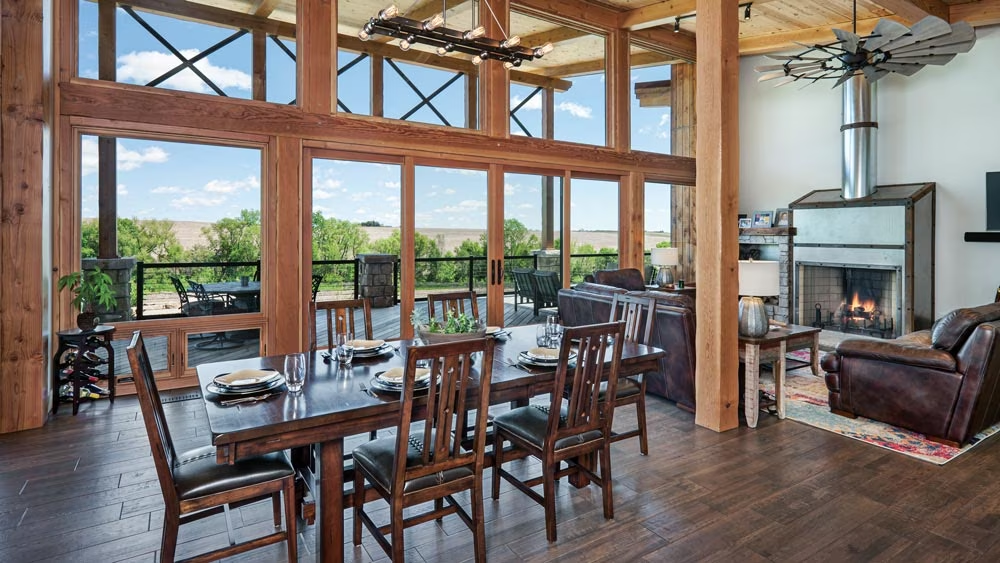
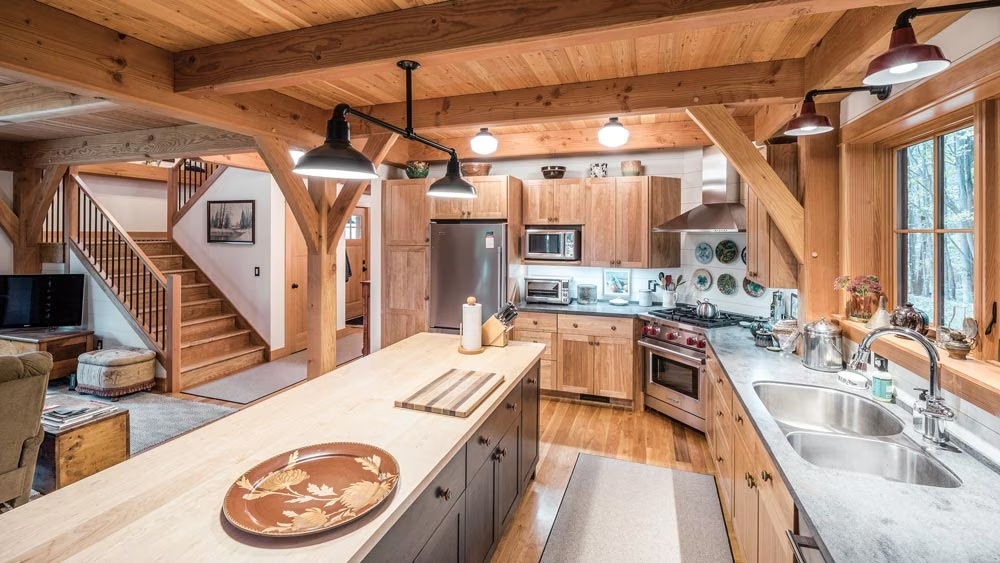
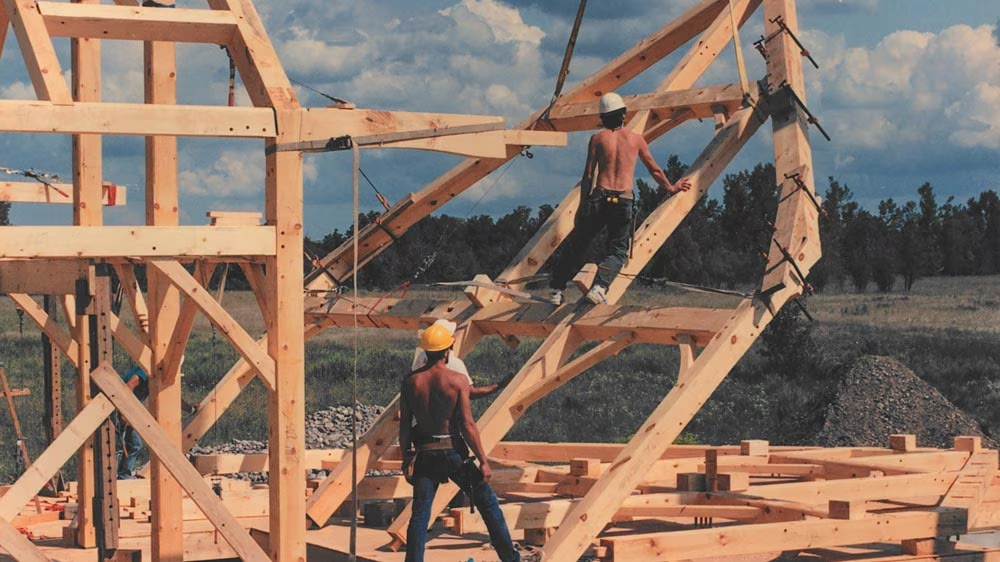
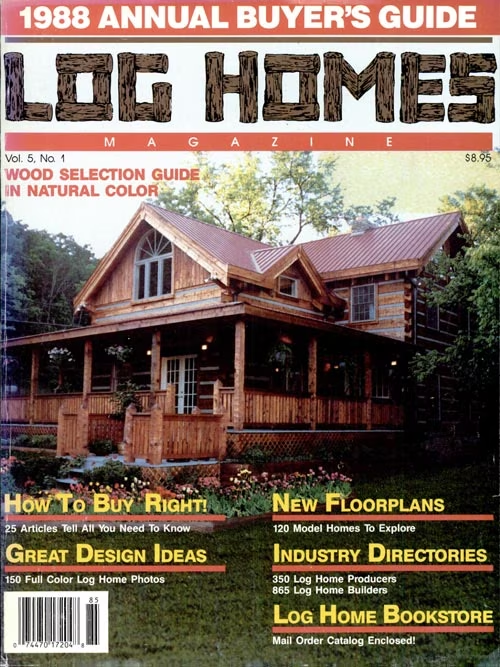
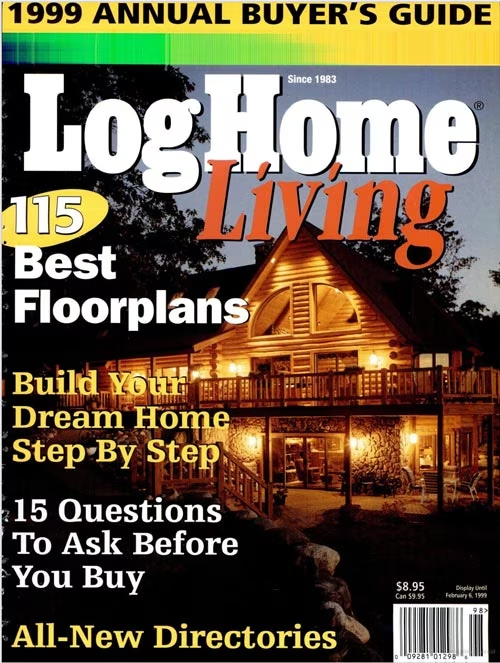

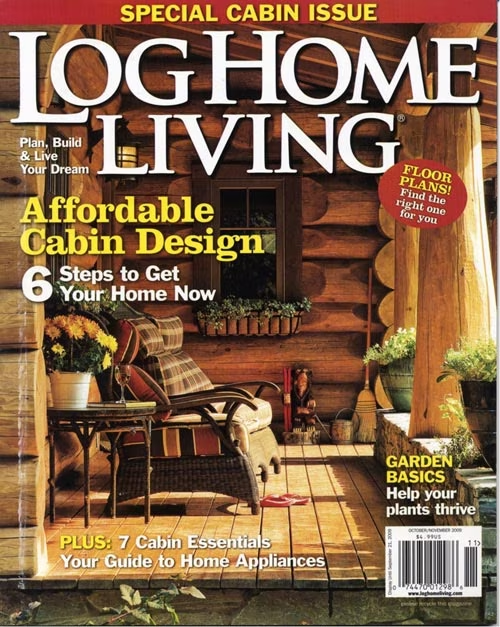
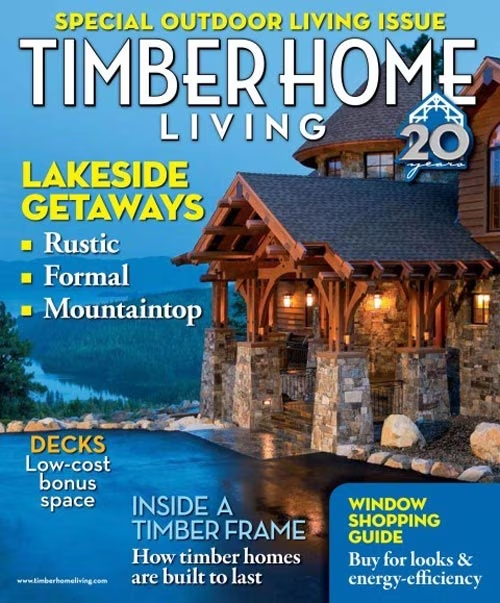
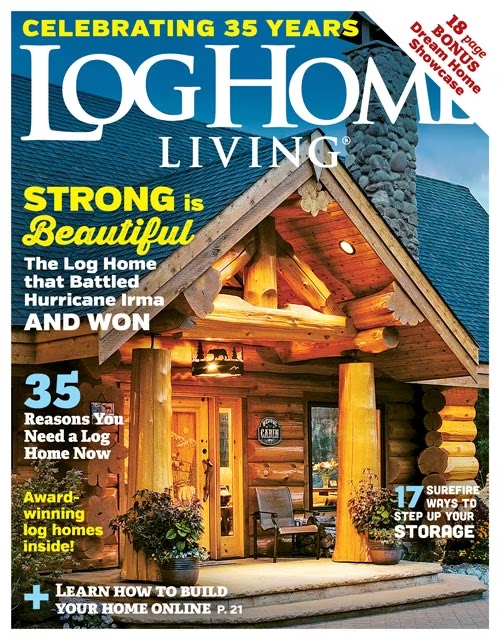
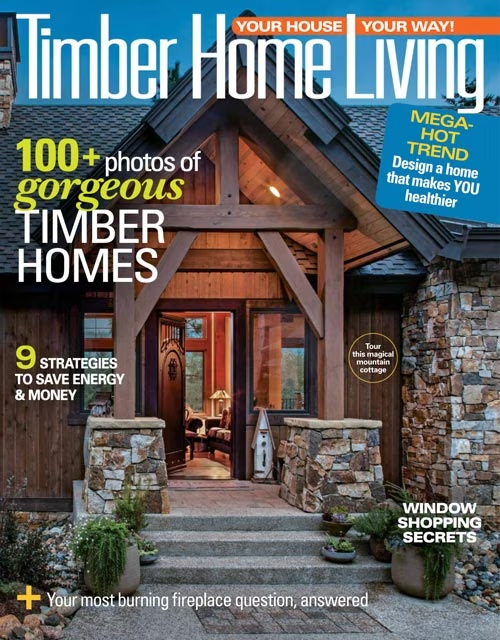



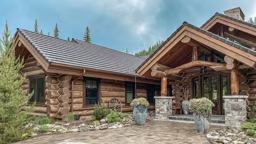

_11868_2024-09-17_08-44-256x288.avif)


